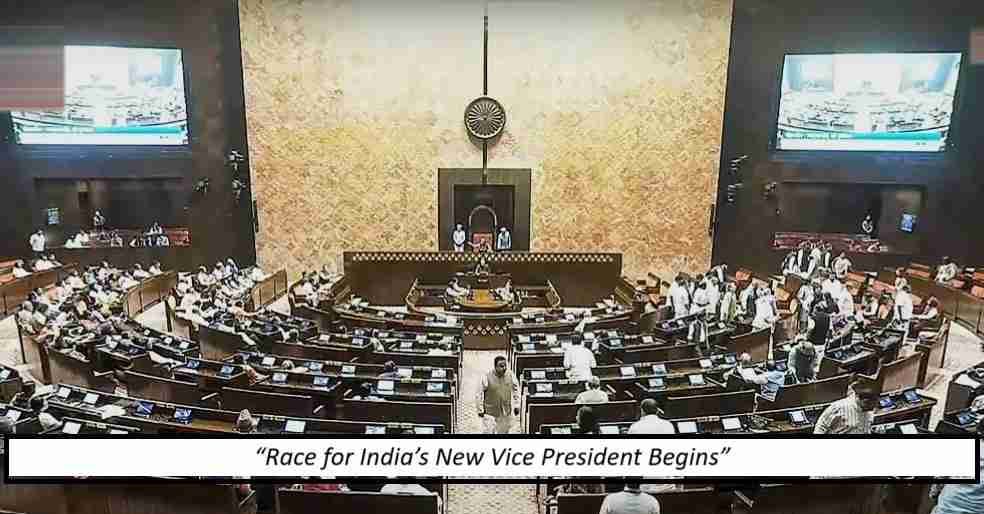Election Commission announces poll date following Vice President Jagdeep Dhankhar’s unexpected resignation
🏛️ Vice Presidential Election Announced for September 9
The Election Commission of India (ECI) has officially scheduled the Vice Presidential election for September 9, following the unexpected resignation of Vice President Jagdeep Dhankhar on July 21.
The notification for the election will be issued on August 7, and the last date to file nominations is August 21, the ECI said. The election results will be declared on the polling day itself, September 9.
📌 Key Highlights:
- 🗓️ Election Date: September 9, 2025
- 🧾 Reason: Resignation of Vice President Jagdeep Dhankhar
- 📄 Notification to be issued: August 7
- 🖊️ Last date for nominations: August 21
- 📣 Results announcement: September 9 (same day)
- 🏛️ Announced by: Election Commission of India
- Post to be filled: Vice President of India – the second-highest constitutional position
📚 Constitutional Provision for Vice Presidential Election
As per Clause 2 of Article 68 of the Constitution of India, an election to fill a vacancy in the office of the Vice President occurring due to death, resignation, removal, or otherwise, should be held “as soon as possible.”
The person elected will serve a full five-year term starting from the day they assume office.
📉 Why Did Jagdeep Dhankhar Resign?
Vice President Jagdeep Dhankhar’s resignation came more than two years before his term was due to end on August 10, 2027.
While he officially cited medical reasons, sources suggest the resignation may have stemmed from a growing rift with the Centre. The tipping point reportedly came when Dhankhar refused to back the government’s stance on the impeachment of Justice Yashwant Varma, breaking from his earlier alignment with the ruling party.
🗳️ Who Elects the Vice President?
The Vice President of India is elected by an Electoral College that includes:
- All elected members of the Lok Sabha (currently 542 out of 543 seats filled)
- All elected and nominated members of the Rajya Sabha (effective strength: 240 out of 245)
This brings the total voting strength of the Electoral College to 782.
The majority required to win is 391 votes, assuming all members vote.
🧮 Where the Numbers Stand: NDA vs Opposition
The ruling National Democratic Alliance (NDA) currently holds a comfortable edge:
- Lok Sabha support: 293 of 542 members
- Rajya Sabha support: 129 members (including nominated members assumed to support NDA)
- Total NDA strength: Approx. 422 votes
🪪 Vacant Seats Breakdown:
- 1 Lok Sabha seat: Basirhat, West Bengal
- 5 Rajya Sabha seats:
- 4 from Jammu & Kashmir
- 1 from Punjab (vacated by AAP’s Sanjeev Arora after state assembly bypoll win)
🔄 What’s Next?
- The ECI will issue the official election notification on August 7.
- Candidates will be able to file nominations until August 21.
- Scrutiny and withdrawal of nominations will follow as per the timeline.
- Voting and result declaration will take place on September 9.
📣 Why This Election Matters
- The Vice President also serves as the Chairperson of the Rajya Sabha, a pivotal role in India’s legislative process.
- The election outcome will influence Parliamentary proceedings leading up to the 2026 general elections.
- Dhankhar’s resignation and the circumstances around it may also shape future alignments in national politics.
🕒 Note:
This is a developing political story. Stay tuned for candidate announcements and campaign updates. Refresh this page regularly for the latest coverage.
Also Read : 10 Minutes to 5: How the Centre Forced Jagdeep Dhankhar’s Resignation



